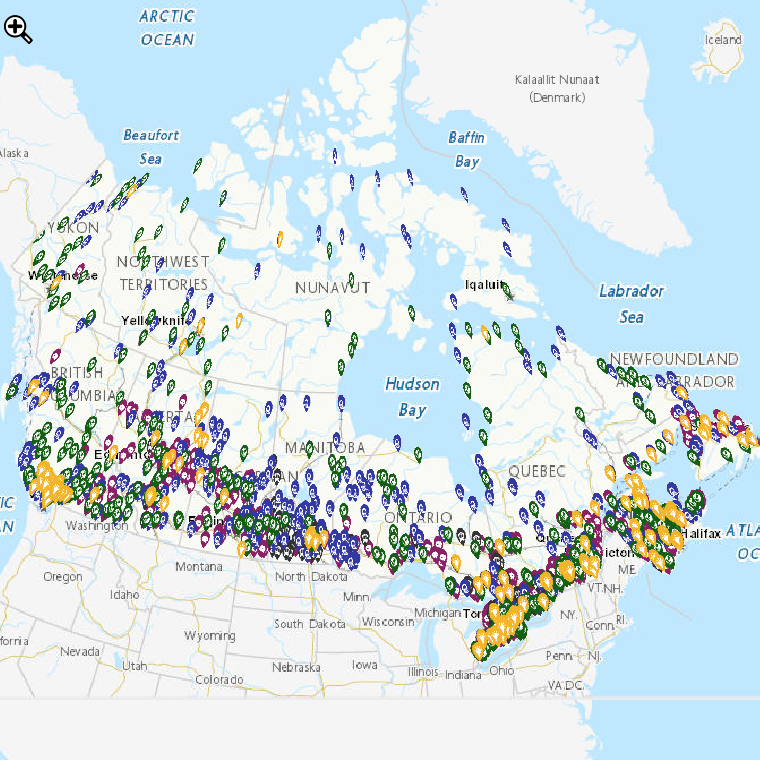Other
Type of resources
Topics
Keywords
Contact for the resource
Provided by
Years
Formats
Representation types
Update frequencies
status
-
Information received in response to notices published in the Canada Gazette under section 71 of the Canadian Environmental Protection Act (CEPA 1999). These notices target chemical substances of interest under the Chemicals Management Plan.
-
This dataset includes all significant new activity (SNAc) orders and notices published under the authority of the Canadian Environmental Protection Act, 1999 (CEPA). The SNAc provisions of CEPA may be applied to a substance or living organism when Environment and Climate Change Canada and Health Canada suspect that a significant new activity in relation to the substance or living organism may pose new or increased risks to the environment or to human health. Information is organized by substance and includes links to relevant Canada Gazette publications. Confidential accession numbers and masked names have been presented for confidential substances. Although great care has been taken to ensure the information herein accurately reflects the requirements prescribed in CEPA, you are advised that, should any inconsistencies be found, the legal documents, published in the Canada Gazette, will prevail. Please note that substances on the Domestic Substances List (DSL) may be presented with a flag next to the substance identification number in official Canada Gazette publications. These flags are included in a separate column in the dataset, and are as follows: S: The “S” flag indicates that the SNAc provisions of CEPA apply to the substance. S': The “S'” (S prime) flag indicates that the SNAc provisions of CEPA apply to a substance that was already listed on the DSL. P: The “P” flag indicates that the substance was assessed and added to the DSL on the basis that it met the Reduced Regulatory Requirement polymer criteria. T: The “T” flag indicates that the substance was manufactured or imported during the transitional period (January 1, 1987 to July 1, 1994). N: The “N” flag indicates that the substance was manufactured or imported after July 1, 1994.
-
This collection holds the layers used for the "Map of Upper Intertidal shoreline segmentation with Shoreline Cleanup Assessment Technique (SCAT) classification", a WMS service maintained by ECCC. The segmentation covers shorelines for Northern Canada, the North coast of British Columbia, as well as Ontario, Quebec, and Atlantic regions.
-
Information received in response to the notice with respect to certain aromatic amines and aromatic azo and benzidine-based substances (2011).
-

Data describing clean growth and climate change projects that have received federal funding since 2015 that feeds into the Climate Action Map. The data include projects that meet Mitigation, Adaptation and Clean Technology objectives. The data include project names and descriptions, funding information, locations, and recipients.
-
Information received in response to the data gathering initiative on certain organic flame retardants (2013)
-
Citation information for peer reviewed scientific and technical articles published in 2013 authored / co-authored by Environment Canada researchers.
-
A collection of citation information for scientific and technical articles authored / co-authored by Environment Canada researchers.
-
Bay of Quinte was designated as one of the 43 Areas of Concern in accordance with Great Lakes Water Quality Agreement (GLWQA). Remedial Action Plan (RAP) is an ongoing collaborative effort implemented by federal, provincial, and local governments as well as industry and public partners. There are 3 key stages of the RAP: Stage 1 is a detailed description of the environmental problem; Stage 2 identifies remedial actions and options; Stage 3 is the final document providing evidence that the beneficial uses have been restored and the AOC can be “delisted”. The Bay of Quinte is a narrow inlet, about 100 km in length, on the north shore of Lake Ontario near the eastern outlet of the lake. The Area of Concern encompasses the bay and its 18 000 km2 (1.8 million ha) drainage basin. The watershed includes the generally agricultural Prince Edward County on the south side of the bay and extends as far north as Algonquin Park. The Trent River is responsible for most of the flow through the bay. The shoreline of the bay includes 19 provincially significant wetlands. About 400 000 people live in the area, with the population around the bay concentrated in the cities of Trenton and Belleville, the towns of Napanee, Picton and Deseronto, and the Mohawk Tyendinaga Territory. For more information visit: https://www.canada.ca/en/environment-climate-change/services/great-lakes-protection/areas-concern/bay-of-quinte.html
-
The St. Marys River was designated as one of the 43 Areas of Concern in accordance with Great Lakes Water Quality Agreement (GLWQA). Remedial Action Plan (RAP) is an ongoing collaborative effort implemented by federal, provincial, and local governments as well as industry and public partners. There are 3 key stages of the RAP: Stage 1 is a detailed description of the environmental problem; Stage 2 identifies remedial actions and options; Stage 3 is the final document providing evidence that the beneficial uses have been restored and the AOC can be “delisted”. The St. Marys River is a 112-km international channel that flows from Lake Superior into the North Channel of Lake Huron. The Area of Concern extends approximately two thirds of the river, from its head at Whitefish Bay downstream to St. Joseph Island. For more information visit https://www.canada.ca/en/environment-climate-change/services/great-lakes-protection/areas-concern/st-marys-river.html
